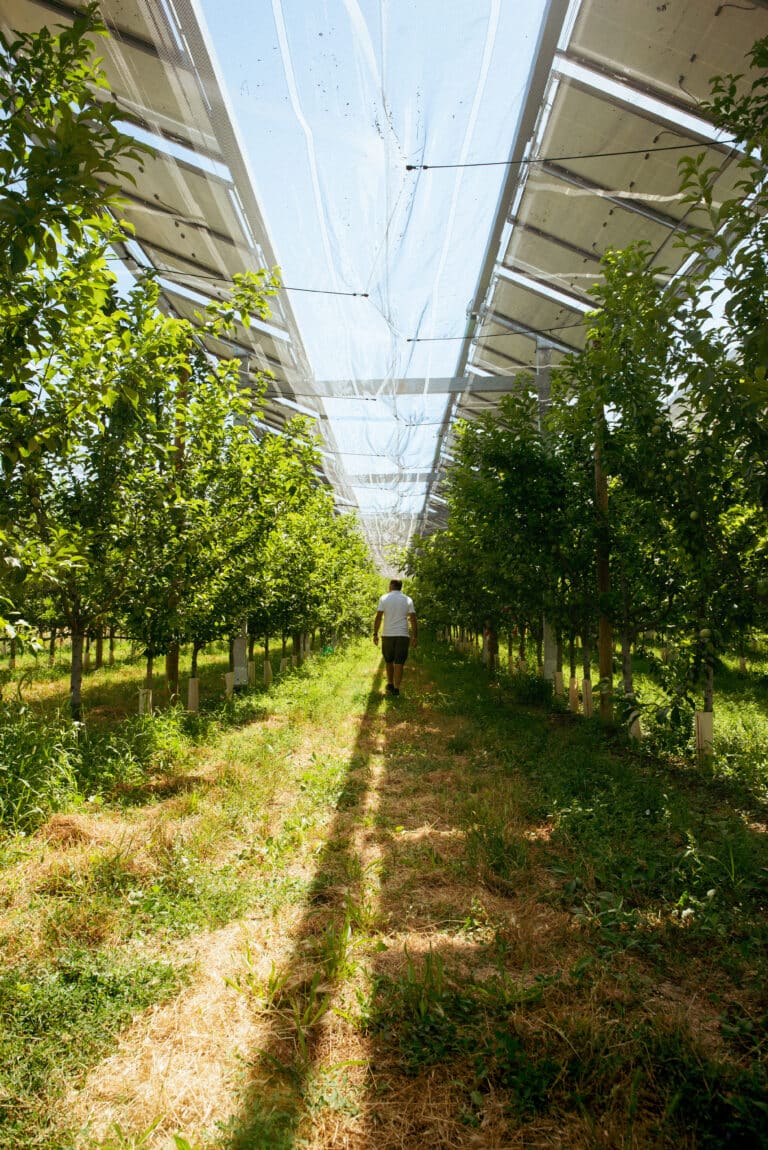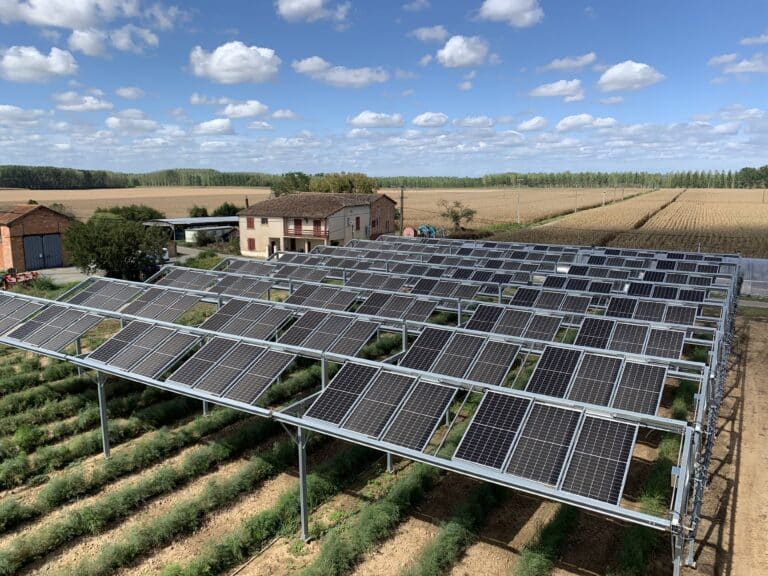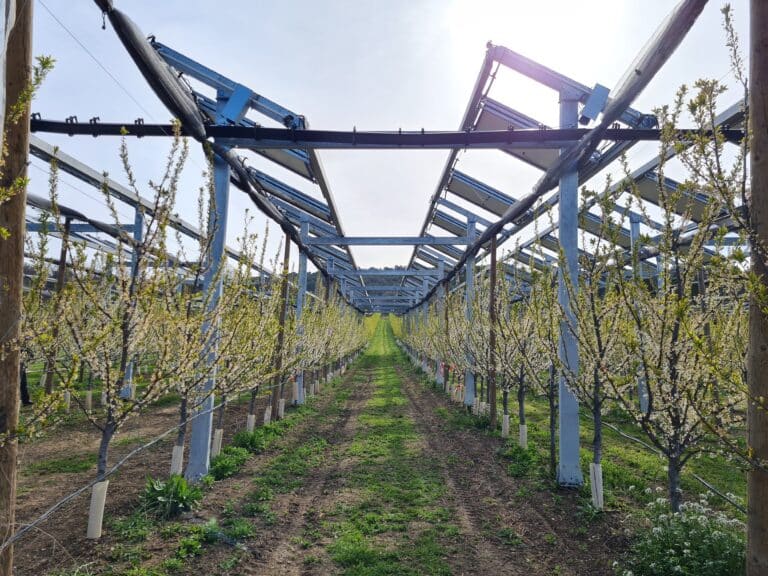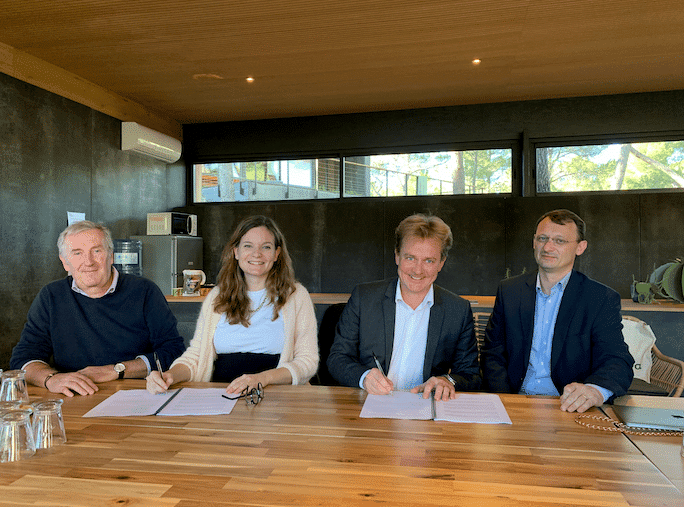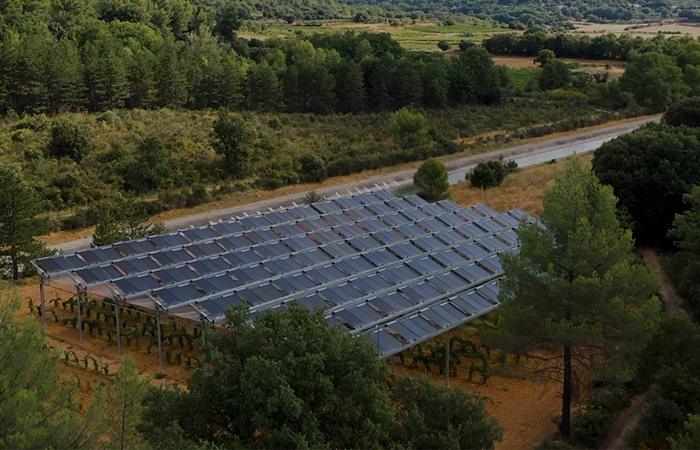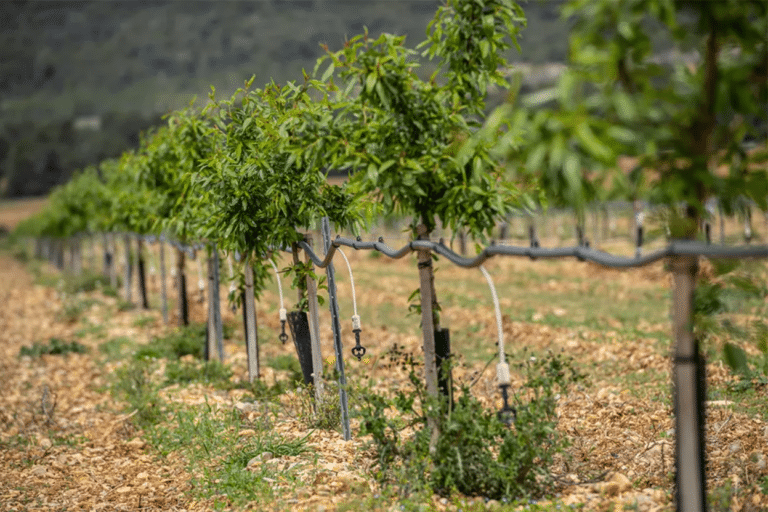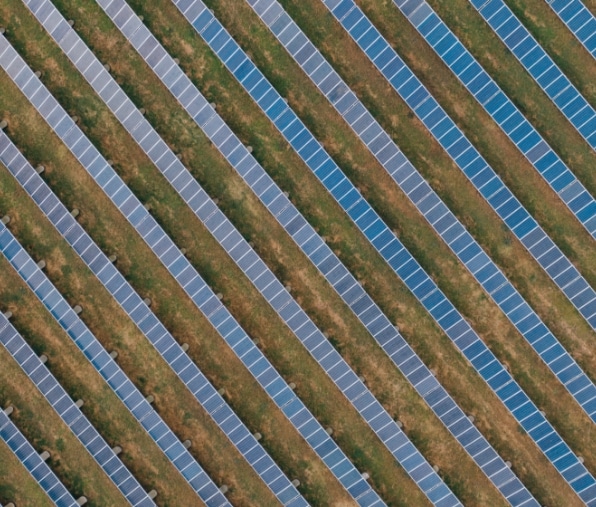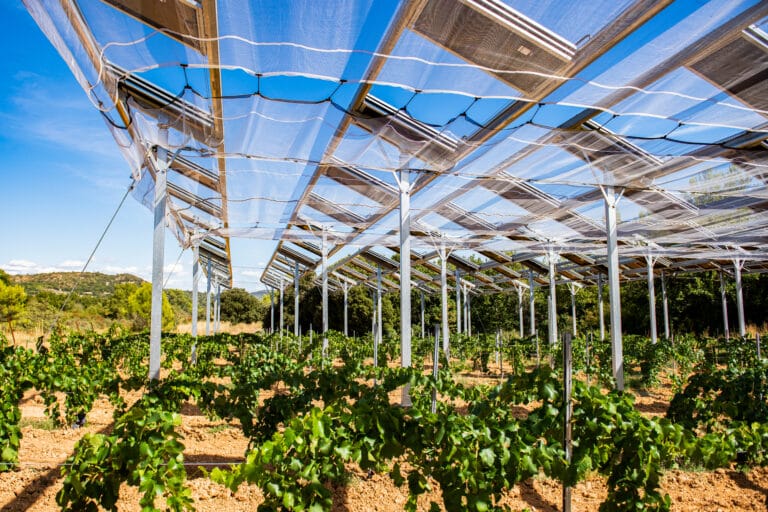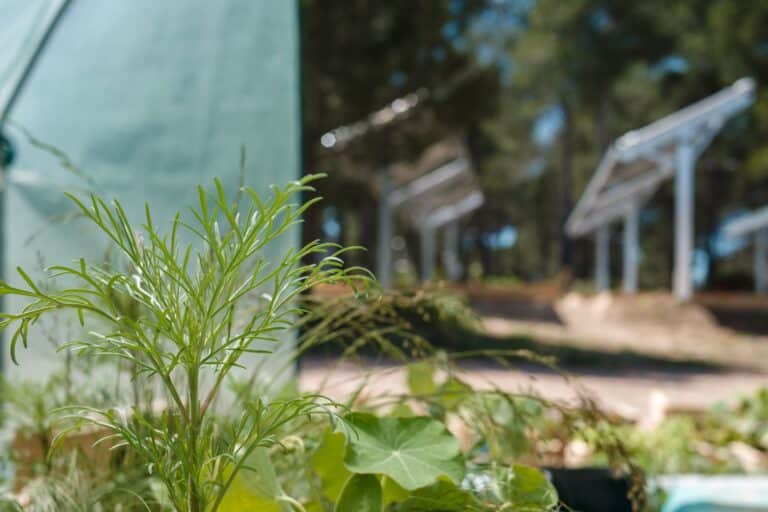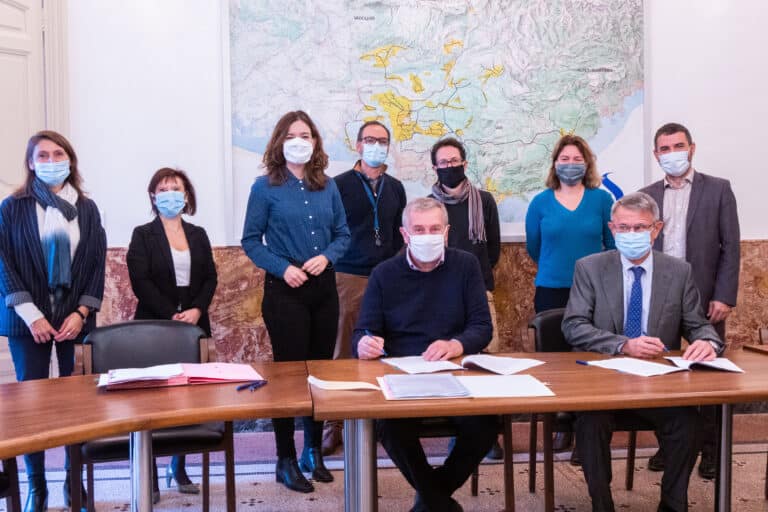Le tout premier site agrivoltaïque d’Ombrea, un des premiers sites agrivoltaïques expérimentaux en France, a été démantelé fin mars 2024. Après 7 ans d’exploitation et de retours scientifiques, ce démonstrateur mené en collaboration avec l’Astredhor Méditerranée entame sa dernière phase, partie à part entière du projet : le démantèlement. Celle-ci est menée afin de prouver la réversibilité de nos installations ainsi que leur impact sur le potentiel agronomique de la parcelle. Retours sur les enjeux, le déroulé et les enseignements de ce démantèlement unique en son genre.
Retour sur notre premier site agrivoltaïque
2017 : construction de notre premier site expérimental
Née en 2017 d’un partenariat avec l’Astredhor Méditerranée, Institut des professionnels du végétal accompagnant les acteurs de la filière horticole, ce site expérimental situé à Hyères (48 panneaux photovoltaïques installés pour une surface de 84m²) protège une parcelle de pivoines plantées la même année. La pivoine est une culture emblématique du sud, tout particulièrement du Var (83) qui concentre près de la totalité de la production de pivoines françaises.
Cette structure a été installée avec la première version de nos solutions d’ombrières dynamiques. Les panneaux coulissent, se rétractent et se déploient par une transmission crémaillère (rails avec roues dentées) selon les besoins en ombre des pivoines. Entièrement métallique, elle est ancrée au sol grâce à des vis de terre, sans coulage béton, limitant l’emprise de la structure au sol.
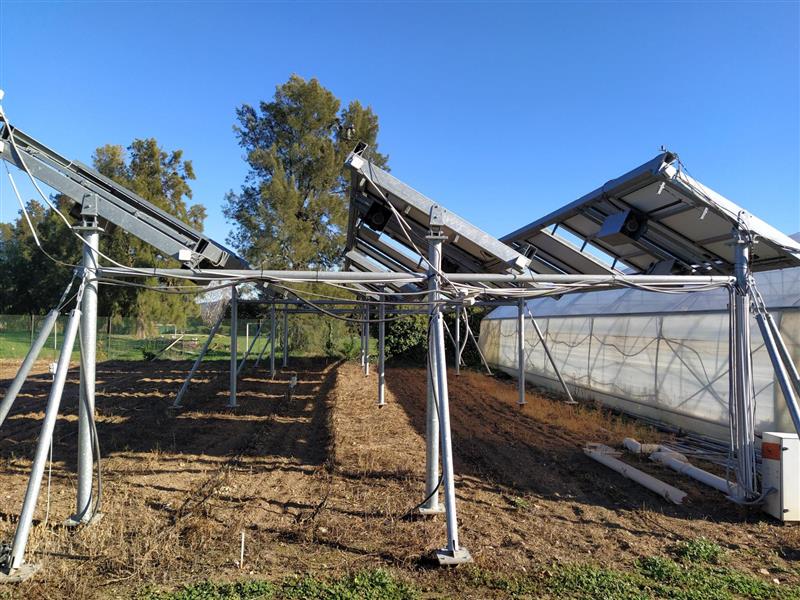
A partir de 2018 : l’exploitation & résultats agronomiques positifs
La pivoine est une première culture pertinente à suivre car particulièrement sujette au stress hydrique. Nous avons donc mis en place dès 2018, en plus d’un pilotage adapté, un système d’irrigation différenciée sur zone témoin et zone protégée pour monitorer l’impact de nos solutions sur les besoins en eau des pivoines. Ce site a été équipé de capteurs qui, par la suite, se sont retrouvés sur l’ensemble de nos sites agrivoltaïques : une centrale météo avec température et humidité de l’air et du sol, un anémomètre (capteur de vent), et un capteur pour suivre la luminosité (PAR).
Depuis 2018, le site a connu 4 récoltes de pivoines de tailles conséquentes et nous a permis d’avoir des retours d’expérience intéressants dont voici quelques enseignements :
- Rendement équivalent : maintien du nombre de tiges florales de toutes qualités sous les panneaux
- Hausse de la qualité : +8% de tiges florales de qualité supérieure en moyenne entre 2020 et 2022 et maintien de la tenue en vase
- Baisse des brûlures : diminution des brûlures sur feuille et retard de la sénescence
- Baisse des besoins en irrigation : -21% d’irrigation en moyenne entre l’été 2018 et fin 2022
Pourquoi ce démantèlement ?
Depuis le départ, ce site est conçu et suivi dans une logique purement expérimentale. Il doit nous permettre d’établir la pertinence agronomique de nos solutions dans les apports qu’elles fournissent aux cultures, mais également dans leur réversibilité. C’est donc ce dernier point que le démantèlement vise à tester :
- Impact sur les sols (biodiversité, structure, tassement, traces de pollution) d’un démantèlement de structure agrivoltaïque
- Effet de résilience, c’est-à-dire le comportement de la culture après une période d’ombrage dynamique
Notre objectif est simple : rendre la parcelle dans son état initial et répondre aux exigences de la loi relative à l’Accélération de la Production d’Energies Renouvelables (APER). C’est ce que nous tenterons de démontrer avec les études et le suivi mis en place post-démantèlement sur les sols et les pivoines.
Ce que dit la loi APER
Le tout nouveau décret dédié à l’agrivoltaïsme publié dans le Journal Officiel le 9 avril 2024, pose le cadre pour les opérations de démantèlement de structures agrivoltaïques.
Les opérations de démantèlement doivent comprendre :
- Le démantèlement des installations de production, y compris l’excavation de toutes les fondations et tranchées
- La remise en état des terrains, en garantissant notamment le maintien de leur vocation initiale
- La réutilisation, le recyclage, la valorisation ou à défaut l’élimination des déchets de démolition ou de démantèlement
- L’intervention de l’organisme responsable des contrôles permettant d’attester du maintien des qualités agronomiques des sols
Le déroulé de ce démantèlement a été donc pensé pour répondre à ces exigences.
Un démantèlement en deux étapes
Première étape : la mise en sécurité du site
Sur ce site se trouvent deux sources d’électricité :
- La source d’alimentation en courant alternatif, source d’alimentation principale du site, il s’agit de l’énergie nous permettant de piloter les panneaux solaires.
- Le courant continu produit par les panneaux solaires. Contrairement aux autres sites, ce courant n’est pas injecté sur le réseau électrique, le but de ce site étant depuis le début uniquement de prouver la pertinence de l’ombrage – et non la production d’énergie.
Les enjeux liés à cette étape critique du démantèlement sont nombreux. La mise en sécurité électrique du site définit, par la suite, le bon déroulement de la suite du chantier. Pour notre équipe de maintenance, il s’agissait de couper la liaison source d’alimentation en courant alternatif du site afin de le sécuriser. Autre enjeu central : la dépollution, ou la gestion des matériaux récupérés suite au démontage du système électrique (gaines, câbles et autres résidus de chantier). Limiter l’impact d’un démantèlement, c’est aussi gérer les déchets. Ainsi, nous avons pu récupérer afin de réutiliser tous les capteurs et le matériel électrique des tableaux (automatiques, disjoncteurs etc.).
Deuxième étape : le démontage complet de la structure
Nous avons collaboré avec deux entreprises pour le démontage de la structure agrivoltaïque :
- Foselev, entreprise de levage, pour le démontage de la structure hors sol et des panneaux. Son équipe de levageurs habilités sont intervenus pour élinguer et démonter l’ensemble de la structure. Par la suite, celle-ci a été acheminée pièce par pièce dans des centres de tri adaptés :
- L’acier de la structure (tubes, vis, rondelles…) a été déposé dans un centre de recyclage pour réutilisation.
- Les panneaux ont été transportés dans un centre de recyclage de panneaux solaires agréé
- Technopieux, entreprise spécialisée dans les fondations vissées, est intervenue pour retirer la structure dans le sol, notamment les vis de terre.
Un des enjeux principaux de cette étape réside dans la préservation des pivoines, qui, le jour du démantèlement, avaient déjà poussé de plus de 5cm. Toutes les précautions ont donc été prises pour ne pas endommager la culture en place.
Quel impact aura le démantèlement sur les cultures et le potentiel agronomique du sol ?
C’est à cette question que les suivis mis en place par notre équipe R&D permettront de répondre.
Le suivi de l’impact sur la qualité des sols
Ce site pilote est un de nos sites sur lequel la qualité des sols est suivie. Nous allons notamment suivre le risque de tassement subi suite au passage de gros engins de démantèlement, retours qui n’existent pas encore dans le secteur.
Pour assurer ce suivi (T0 avant démantèlement, et T1 à plus de M+1 du démantèlement), les indicateurs choisis se concentrent sur tous les aspects de la qualité d’un sol : sa qualité physico-chimique et notamment sa structure et la détection de potentiels polluants, sans oublier la biologique du sol avec un suivi des communautés microbiologiques. Les prélèvements se feront en zone témoin et sous panneaux, dans les rangs et inter-rangs de pivoines, ainsi que sur une zone enherbée proche de la parcelle où la grue de démantèlement a été installée.
Zoom sur les indicateurs de suivi :
- Indicateurs de suivi de structure :
- Test bêche pour un diagnostic rapide de l’état structural du sol
- Tige pénétrométrique pour mesurer la résistance du sol à la pénétration et déceler d’éventuels tassements en profondeur
- Densité apparente, indicateur de compactage du sol
Si ces différentes analyses montrent un sol tassé, cela poserait un problème pour les futurs développements racinaires, le maintien de la vie du sol et donc potentiellement par la suite sur la qualité des futures récoltes.
- Indicateurs de suivi de la microbiologie :
- Mesure de la granulométrie du sol et de ses composés chimiques (carbone, azote, phosphore, pH etc.) ce qui nous permettra de définir le type de sol et l’environnement dans lequel évoluent les micro-organismes
- Suivi de la biomasse moléculaire microbienne et du ratio champignons/bactéries à partir de l’ADN microbien extrait., indicateurs précoces de la réponse des microorganismes du sol à une perturbation.
- Indicateurs de pollution :
- Mesure de contaminants (métaux lourds, composés aromatiques volatils, hydrocarbures)
Le suivi de l’impact sur les cultures
Enfin, l’impact du démantèlement sur les cultures sera également monitoré. Toute cette année, nous poursuivrons le même suivi que nous réalisons depuis 7 ans sur cette parcelle. Nous pourrons ainsi comparer les mêmes indicateurs pré et post démantèlement afin d’établir l’impact précis sur les pivoines et valider, ainsi, la protection climatique apportée par notre solution. Nous suivrons notamment :
- Le rendement et la qualité de la culture (nombre de tiges florales et non florales, longueur et diamètre des tiges)
- La consommation en eau
Les premiers résultats des différents suivis seront disponibles dans les prochains mois. Nous vous les communiquerons, et ce sera l’occasion de faire le bilan de ce tout premier démantèlement de site agrivoltaïque !



